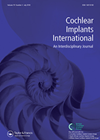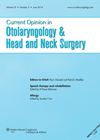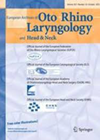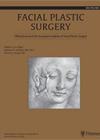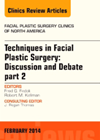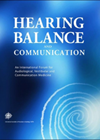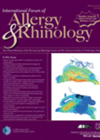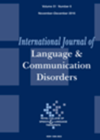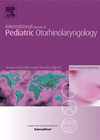
Journal Reviews archive for 2014
How can we assess children with complex needs?
In the early days of cochlear implantation, children with additional disorders were being excluded as poor candidates whereas today a large number of children with complex needs are being referred for cochlear implant assessment. However, the related problems include difficulties...
Sublingual immunotherapy
This paper reviews the recent European studies on sublingual immunotherapy (SLIT). SLIT is currently widely used in Europe and is gaining popularity in the United States. It is known that longer treatment is needed with SLIT compared with subcutaneous immunotherapy...
Endoscopic myringoplasty: a promising alternative to microscopic surgery
Endoscopes have revolutionised otitis media surgery in recent years and are increasingly used in the surgical management of cholesteatoma, sinus tympani pathology and facial nerve surgery. Despite this, the development of endoscopic myringoplasty and how this compares to its microscopic...
The sentinel lymph nodes revisited
The concept of sentinel lymph node sampling has been around for some time. However, its acceptability in routine head and neck practice has yet to be established. This article presents the authors’ experience in 10 patients with Merkel cell carcinoma...
Polydioxanone in septal reconstruction
Septal reconstruction is a challenging problem and is undertaken for functional or cosmetic reasons, or a combination of both. Either autologous cartilage, commonly auricular, or other alloplastic material can be used. The authors describe the use of a Polydioxanone (PDS)...
Techniques in Facial Plastic Surgery: Discussion and Debate part 2
This edition of this popular journal is dedicated to ‘panel discussion’ on some of the most common controversies associated with ‘bread and butter’ facial aesthetic procedures. The procedures included are relevant and the aspects discussed are of practical importance to...
Auditory processing in children with unilateral hearing loss
It is a common assumption that unilateral hearing loss (UHL) in children is of little consequence because appropriate development of speech and language can still occur with one normal hearing ear. Recent studies, however, suggest that there are significant differences...
Tinnitus in patients on therapy with PPI and in PPI non–users
Tinnitus is a chronic and debilitating condition and approximately 10% of the population is afflicted. A myriad of pharmacological treatments for tinnitus are available but only a few controlled studies have shown positive results. The relationship between proton pump inhibitors...
Objective versus subjective – again!
The use of objective measurements of nasal airflow has a long history; however, its clinical application remains, at most, patchy. The main reason for that has been the lack of convincing studies showing a good correlation between the findings of,...
Early intensive aphasia therapy in stroke patients
The impact of aphasia following stroke is devastating. Very early aphasia rehabilitation studies have been the subject of ongoing debate. This paper describes the comparison of a very early aphasia therapy regimen with a historical ‘usual care’ control group after...
Early habilitation for hearing impairment in children with Down syndrome
Approximately 40-80% of children with Down syndrome have hearing impairment in addition to speech and language impairment. The commonest cause of hearing impairment in young children is otitis media with effusion. This paper investigated the impact of early hearing loss...
BAHA stability measurement in children
This useful paper reports the experience of using resonance frequency analysis for single stage bone-conduction implants in a paediatric population. A smartpegTM is attached to the abutment and vibrated by a close quarters magnetic field. The amount of vibration is...

